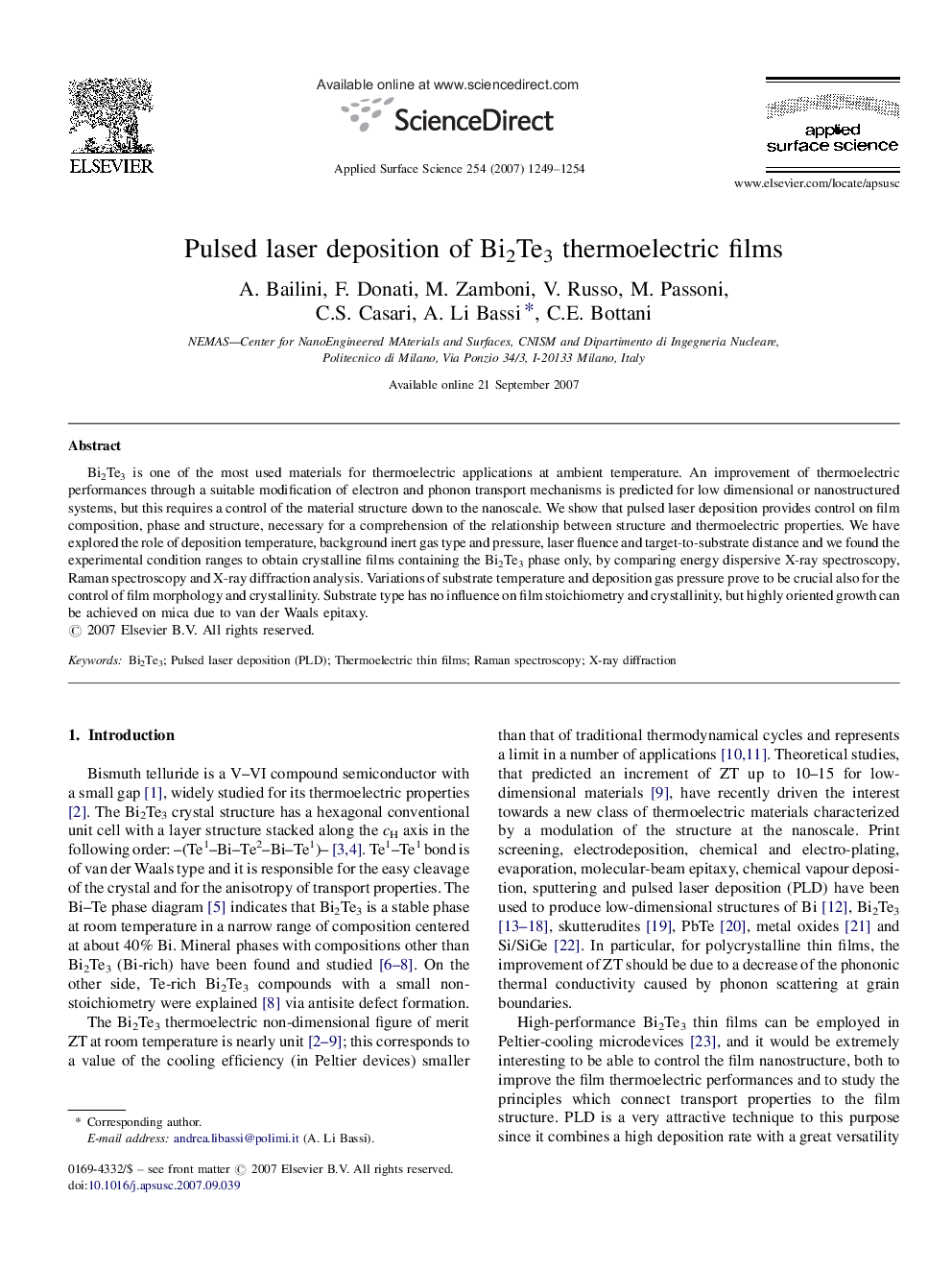| Article ID | Journal | Published Year | Pages | File Type |
|---|---|---|---|---|
| 5368209 | Applied Surface Science | 2007 | 6 Pages |
Bi2Te3 is one of the most used materials for thermoelectric applications at ambient temperature. An improvement of thermoelectric performances through a suitable modification of electron and phonon transport mechanisms is predicted for low dimensional or nanostructured systems, but this requires a control of the material structure down to the nanoscale. We show that pulsed laser deposition provides control on film composition, phase and structure, necessary for a comprehension of the relationship between structure and thermoelectric properties. We have explored the role of deposition temperature, background inert gas type and pressure, laser fluence and target-to-substrate distance and we found the experimental condition ranges to obtain crystalline films containing the Bi2Te3 phase only, by comparing energy dispersive X-ray spectroscopy, Raman spectroscopy and X-ray diffraction analysis. Variations of substrate temperature and deposition gas pressure prove to be crucial also for the control of film morphology and crystallinity. Substrate type has no influence on film stoichiometry and crystallinity, but highly oriented growth can be achieved on mica due to van der Waals epitaxy.
